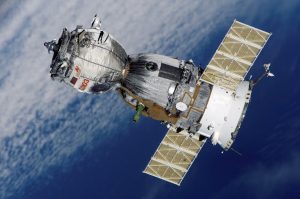
GEO satellites, or Geostationary Earth Orbit satellites, are a type of satellite that orbits the Earth at an altitude of approximately 36,000 kilometers, remaining stationary relative to a fixed point on the planet. This unique characteristic allows GEO satellites to provide continuous coverage of a specific region, making them ideal for various applications such as communication, navigation, and weather forecasting. GEO satellites have revolutionized the way we communicate and navigate, enabling global connectivity and facilitating international trade, commerce, and cultural exchange.
The first GEO satellite, Syncom 2, was launched in 1963, and since then, numerous satellites have been launched into geostationary orbit, providing a wide range of services including television broadcasting, telecommunication, and navigation. One of the most significant advantages of GEO satellites is their ability to provide high-gain antennas, which enable them to transmit and receive signals with high power and sensitivity. This allows for high-quality communication and navigation services, even in remote or underserved areas.
GEO satellites have numerous applications in various industries, including telecommunication, where they provide critical infrastructure for international communication, enabling phone calls, video conferencing, and data transmission. In the navigation sector, GEO satellites are used for positioning and timing, providing location information and synchronizing clocks for various applications, including aviation, maritime, and land transportation. Weather forecasting is another significant application of GEO satellites, as they provide critical data on atmospheric conditions, enabling meteorologists to predict weather patterns and issue timely warnings for severe weather events.
In addition to their practical applications, GEO satellites have also played a significant role in scientific research, enabling scientists to study the Earth’s atmosphere, oceans, and land surfaces. By providing high-resolution images and data on the Earth’s climate, GEO satellites have contributed significantly to our understanding of the planet and its complex systems. Furthermore, GEO satellites have facilitated international cooperation and collaboration, enabling countries to share resources, expertise, and knowledge, and promoting global development and prosperity.
However, the increasing number of satellites in geostationary orbit has raised concerns about space debris and the potential for collisions. As the demand for satellite services continues to grow, it is essential to develop sustainable and responsible practices for managing the geostationary orbit and ensuring the long-term viability of these critical infrastructure assets. GEO satellites will undoubtedly continue to play a vital role in shaping the future of global communication, navigation, and scientific research, and it is crucial that we prioritize their development and management to ensure their benefits are realized for generations to come.
In conclusion, GEO satellites have transformed the way we communicate, navigate, and understand our planet. Their unique characteristics and capabilities have enabled numerous applications and services, from telecommunication and navigation to weather forecasting and scientific research. As we look to the future, it is essential that we continue to invest in the development and management of GEO satellites, ensuring their sustainability and maximizing their benefits for humanity.
The development and launch of GEO satellites require significant investment and collaboration among governments, industries, and international organizations. The International Telecommunication Union (ITU) plays a crucial role in coordinating the use of the geostationary orbit, ensuring that satellites are deployed in a way that minimizes interference and maximizes efficiency. The United Nations Committee on the Peaceful Uses of Outer Space (COPUOS) also provides a platform for international cooperation and discussion on issues related to the use of outer space, including the development and management of GEO satellites.
As the demand for satellite services continues to grow, it is essential that we prioritize the development of new technologies and innovations that can enhance the capabilities and sustainability of GEO satellites. This includes the development of more efficient propulsion systems, advanced materials, and innovative architectures that can reduce the cost and environmental impact of satellite launches. Furthermore, the development of new applications and services, such as satellite-based internet and Earth observation, will require significant investment in research and development, as well as international cooperation and collaboration.
In the context of global communication and navigation, GEO satellites play a vital role in providing critical infrastructure and services. The development of new technologies and innovations will be crucial in enhancing the capabilities and sustainability of these satellites, ensuring that they continue to provide high-quality services and support global development and prosperity. As we look to the future, it is essential that we prioritize the development and management of GEO satellites, ensuring their sustainability and maximizing their benefits for humanity.
The future of GEO satellites is closely tied to the development of new technologies and innovations that can enhance their capabilities and sustainability. The use of artificial intelligence and machine learning can improve the efficiency and accuracy of satellite operations, enabling real-time monitoring and control of satellite systems. The development of quantum computing can also enhance the security and encryption of satellite communications, ensuring that sensitive information is protected from interception and eavesdropping.
In addition to these technological advancements, the development of new business models and partnerships will be crucial in enhancing the sustainability and accessibility of GEO satellites. This includes the development of public-private partnerships, where governments and industries collaborate to develop and launch satellites, as well as new business models that can reduce the cost and increase the efficiency of satellite services. The development of new regulatory frameworks and standards will also be essential in ensuring the long-term viability and sustainability of GEO satellites, providing a stable and predictable environment for investment and innovation.
In conclusion, the future of GEO satellites is closely tied to the development of new technologies, innovations, and partnerships. As we look to the future, it is essential that we prioritize the development and management of these critical infrastructure assets, ensuring their sustainability and maximizing their benefits for humanity. The development of GEO satellites will undoubtedly continue to play a vital role in shaping the future of global communication, navigation, and scientific research, and it is crucial that we invest in their development and management to ensure their benefits are realized for generations to come.
The importance of GEO satellites cannot be overstated, and their impact on modern society is undeniable. From enabling global communication and navigation to facilitating scientific research and international cooperation, GEO satellites have transformed the way we live, work, and interact with one another. As we look to the future, it is essential that we continue to invest in the development and management of these critical infrastructure assets, ensuring their sustainability and maximizing their benefits for humanity.
One of the most significant benefits of GEO satellites is their ability to provide global coverage, enabling communication and navigation services to be delivered to remote and underserved areas. This has been particularly significant in developing countries, where access to communication and navigation services has been limited. The development of GEO satellites has enabled these countries to leapfrog traditional infrastructure development, providing critical services and enabling economic growth and development.
In addition to their practical applications, GEO satellites have also played a significant role in international cooperation and diplomacy. The development and launch of satellites have required collaboration among governments, industries, and international organizations, promoting global cooperation and understanding. The International Telecommunication Union (ITU) has played a crucial role in coordinating the use of the geostationary orbit, ensuring that satellites are deployed in a way that minimizes interference and maximizes efficiency.
The development of GEO satellites has also enabled the creation of new industries and job opportunities. The satellite industry has grown significantly over the past few decades, creating new opportunities for employment and investment. The development of new technologies and innovations has also enabled the creation of new industries, such as satellite-based internet and Earth observation, which have the potential to transform the way we live and work.
In conclusion, the impact of GEO satellites on modern society has been significant, enabling global communication and navigation, facilitating scientific research and international cooperation, and creating new industries and job opportunities. As we look to the future, it is essential that we continue to invest in the development and management of these critical infrastructure assets, ensuring their sustainability and maximizing their benefits for humanity. The development of GEO satellites will undoubtedly continue to play a vital role in shaping the future of global communication, navigation, and scientific research, and it is crucial that we prioritize their development and management to ensure their benefits are realized for generations to come.
The use of GEO satellites has also raised concerns about space debris and the potential for collisions. As the number of satellites in geostationary orbit continues to grow, it is essential that we develop sustainable and responsible practices for managing the geostationary orbit and ensuring the long-term viability of these critical infrastructure assets. This includes the development of new technologies and innovations that can reduce the risk of collisions and minimize the impact of space debris.
In addition to these concerns, the development of GEO satellites has also raised questions about regulation and governance. The use of the geostationary orbit is regulated by the International Telecommunication Union (ITU), which coordinates the use of the orbit and ensures that satellites are deployed in a way that minimizes interference and maximizes efficiency. However, the development of new technologies and innovations has raised questions about the need for new regulatory frameworks and standards, which can ensure the long-term viability and sustainability of GEO satellites.
The development of GEO satellites has also enabled the creation of new business models and partnerships. The use of public-private partnerships has enabled the development and launch of satellites, providing critical services and enabling economic growth and development. The development of new business models has also enabled the creation of new industries, such as satellite-based internet and Earth observation, which have the potential to transform the way we live and work.
In conclusion, the development and use of GEO satellites has raised a number of concerns and questions about their impact on modern society. However, the benefits of these critical infrastructure assets are undeniable, and their development and management will undoubtedly continue to play a vital role in shaping the future of global communication, navigation, and scientific research. As we look to the future, it is essential that we prioritize the development and management of GEO satellites, ensuring their sustainability and maximizing their benefits for humanity.
GEO Satellites and Space Debris
The increasing number of satellites in geostationary orbit has raised concerns about space debris and the potential for collisions. As the demand for satellite services continues to grow, it is essential that we develop sustainable and responsible practices for managing the geostationary orbit and ensuring the long-term viability of these critical infrastructure assets. This includes the development of new technologies and innovations that can reduce the risk of collisions and minimize the impact of space debris.
The International Telecommunication Union (ITU) has developed guidelines and regulations for the responsible use of the geostationary orbit, including measures to minimize the risk of collisions and reduce the impact of space debris. However, the development of new technologies and innovations will be crucial in addressing these concerns and ensuring the long-term viability of GEO satellites.
One of the most significant challenges in addressing the issue of space debris is the lack of international cooperation and agreement. The use of the geostationary orbit is regulated by the International Telecommunication Union (ITU), but the development of new technologies and innovations will require international cooperation and agreement on standards and regulations. The United Nations Committee on the Peaceful Uses of Outer Space (COPUOS) has played a crucial role in promoting international cooperation and discussion on issues related to the use of outer space, including the development and management of GEO satellites.
In conclusion, the issue of space debris is a significant concern for the development and use of GEO satellites. However, the development of new technologies and innovations, combined with international cooperation and agreement, can address these concerns and ensure the long-term viability of these critical infrastructure assets. As we look to the future, it is essential that we prioritize the development and management of GEO satellites, ensuring their sustainability and maximizing their benefits for humanity.
GEO Satellites and the Future of Global Communication
The development and use of GEO satellites will undoubtedly continue to play a vital role in shaping the future of global communication. The increasing demand for satellite services, combined with the development of new technologies and innovations, will enable the creation of new industries and job opportunities, and facilitate international cooperation and diplomacy.
One of the most significant benefits of GEO satellites is their ability to provide global coverage, enabling communication and navigation services to be delivered to remote and underserved areas. This has been particularly significant in developing countries, where access to communication and navigation services has been limited. The development of GEO satellites has enabled these countries to leapfrog traditional infrastructure development, providing critical services and enabling economic growth and development.
The development of new technologies and innovations will be crucial in enhancing the capabilities and sustainability of GEO satellites. The use of artificial intelligence and machine learning can improve the efficiency and accuracy of satellite operations, enabling real-time monitoring and control of satellite systems. The development of quantum computing can also enhance the security and encryption of satellite communications, ensuring that sensitive information is protected from interception and eavesdropping.
In conclusion, the future of global communication will be shaped by the development and use of GEO satellites. The increasing demand for satellite services, combined with the development of new technologies and innovations, will enable the creation of new industries and job opportunities, and facilitate international cooperation and diplomacy. As we look to the future, it is essential that we prioritize the development and management of GEO satellites, ensuring their sustainability and maximizing their benefits for humanity.
GEO Satellites and International Cooperation
The development and use of GEO satellites has enabled international cooperation and diplomacy, facilitating the creation of new industries and job opportunities, and promoting global development and prosperity. The International Telecommunication Union (ITU) has played a crucial role in coordinating the use of the geostationary orbit, ensuring that satellites are deployed in a way that minimizes interference and maximizes efficiency.
The development of new technologies and innovations will be crucial in enhancing the capabilities and sustainability of GEO satellites. The use of artificial intelligence and machine learning can improve the efficiency and accuracy of satellite operations, enabling real-time monitoring and control of satellite systems. The development of quantum computing can also enhance the security and encryption of satellite communications, ensuring that sensitive information is protected from interception and eavesdropping.
In conclusion, the development and use of GEO satellites has enabled international cooperation and diplomacy, facilitating the creation of new industries and job opportunities, and promoting global development and prosperity. As we look to the future, it is essential that we prioritize the development and management of GEO satellites, ensuring their sustainability and maximizing their benefits for humanity.
Conclusion
In conclusion, GEO satellites have transformed the way we communicate, navigate, and understand our planet. Their unique characteristics and capabilities have enabled numerous applications and services, from telecommunication and navigation to weather forecasting and scientific research. As we look to the future, it is essential that we prioritize the development and management of these critical infrastructure assets, ensuring their sustainability and maximizing their benefits for humanity.
The development and use of GEO satellites will undoubtedly continue to play a vital role in shaping the future of global communication, navigation, and scientific research. The increasing demand for satellite services, combined with the development of new technologies and innovations, will enable the creation of new industries and job opportunities, and facilitate international cooperation and diplomacy.
As we look to the future, it is essential that we continue to invest in the development and management of GEO satellites, ensuring their sustainability and maximizing their benefits for humanity. The development of new technologies and innovations, combined with international cooperation and agreement, will be crucial in addressing the challenges and concerns associated with the use of GEO satellites, and ensuring their long-term viability and sustainability.







